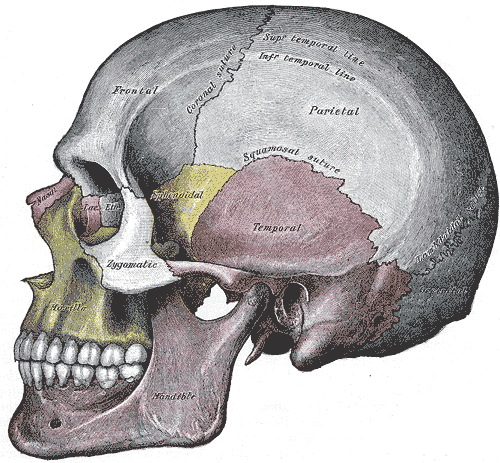|
Frontonasal Suture
The frontonasal suture (Latin: Sutura frontonasalis) is a cranial suture that is found in the human skull, connecting the frontal bone and the two nasal bones. This suture meets the internasal suture at the nasion The nasion () is the most anterior point of the frontonasal suture that joins the nasal part of the frontal bone and the nasal bones. It marks the midpoint at the intersection of the frontonasal suture with the internasal suture joining the na .... It is crucial in the study of cranial development and forensic analysis. In forensic anthropology, the frontonasal suture can be used as a landmark for skull reconstruction and to help determine the age and ancestry of unidentified remains. In craniofacial surgery, understanding the anatomy of the frontonasal suture is crucial for procedures that involve the nasal bridge and forehead. References {{reflist Facial features ... [...More Info...] [...Related Items...] OR: [Wikipedia] [Google] [Baidu] |
Sutura Frontonasalis 32W - CR Seitlich - 001 - Annotation
In anatomy, fibrous joints are joints connected by fibrous tissue, consisting mainly of collagen. These are fixed joints where bones are united by a layer of white fibrous tissue of varying thickness. In the skull, the joints between the bones are called sutures. Such immovable joints are also referred to as synarthroses. Types Most fibrous joints are also called "fixed" or "immovable". These joints have no joint cavity and are connected via fibrous connective tissue. * Sutures: The skull bones are connected by fibrous joints called '' sutures''. In fetal skulls, the sutures are wide to allow slight movement during birth. They later become rigid (synarthrodial). * Syndesmosis: Some of the long bones in the body such as the radius and ulna in the forearm are joined by a ''syndesmosis'' (along the interosseous membrane). Syndemoses are slightly moveable ( amphiarthrodial). The distal tibiofibular joint is another example. * A ''gomphosis'' is a joint between the root of a too ... [...More Info...] [...Related Items...] OR: [Wikipedia] [Google] [Baidu] |
Internasal Suture
The nasal bones are two small oblong bones, varying in size and form in different individuals; they are placed side by side at the middle and upper part of the face and by their junction, form the bridge of the upper one third of the nose. Each has two surfaces and four borders. Structure There is heavy variation in the structure of the nasal bones, accounting for the differences in sizes and shapes of the nose seen across different people. Angles, shapes, and configurations of both the bone and cartilage are heavily varied between individuals. Broadly, most nasal bones can be categorized as "V-shaped" or "S-shaped" but these are not scientific or medical categorizations. When viewing anatomical drawings of these bones, consider that they are unlikely to be accurate for a majority of people. The two nasal bones are joined at the midline internasal suture and make up the bridge of the nose. Surfaces The ''outer surface'' is concavo-convex from above downward, convex from ... [...More Info...] [...Related Items...] OR: [Wikipedia] [Google] [Baidu] |
Nasion
The nasion () is the most anterior point of the frontonasal suture that joins the nasal part of the frontal bone and the nasal bones. It marks the midpoint at the intersection of the frontonasal suture with the internasal suture joining the nasal bones. It is visible on the face as a distinctly depressed area directly between the eyes, just superior to the bridge of the nose. It is a cephalometric landmark that is just below the glabella The glabella, in humans, is the area of skin between the eyebrows and above the nose. The term also refers to the underlying bone that is slightly depressed, and joins the two brow ridges. It is a cephalometric landmark that is just superior .... References {{Authority control Facial features ... [...More Info...] [...Related Items...] OR: [Wikipedia] [Google] [Baidu] |

